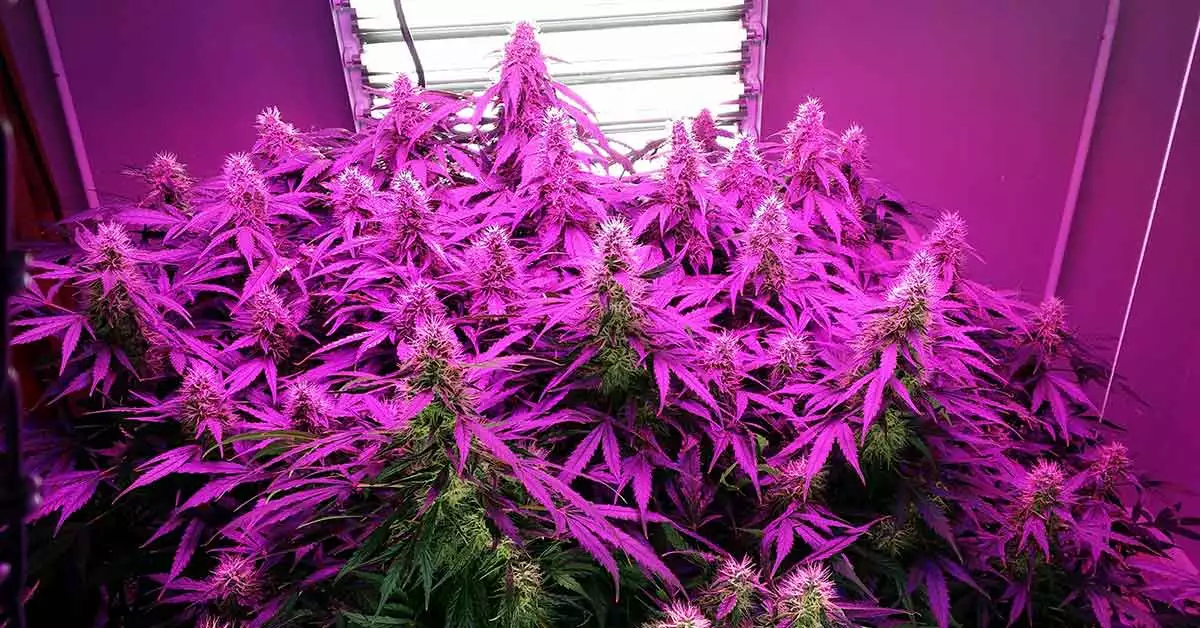Did you take the autoflower challenge this summer? If you did then you are not alone! We have previously talked about the easy to grow nature of these wonderful genetic mutations of the cannabis plant. And by understanding more about how they work, and how they differ from their photoperiod cousins, it is possible to significantly boost cannabis autoflower yields.
They have been an ideal solution for many cannabis growers who have found their grow environment restricted by circumstances beyond their control this year. For this reason, the versatility and compact nature of autoflowers have become desirable qualities. Paradise Seeds has been working with the Topshelf Grower on an experimental project that compares how different techniques can potentially boost cannabis autoflower yields.
In last month’s autoflower article we took a look at the early stages of the plant’s growth and followed the Topshelf grower on his Area 51 Autoflowering Test Site experiment which is showcased on the Paradise Seeds Youtube channel. In this series, the TSG works with two Paradise Seeds auto cannabis strains, Auto Jack, and our newest auto variety – Auto Kong 4 from the Tommy Chong’s collection.
Training Techniques for Bigger Autoflower Yields
A well repeated fact about autoflowering cannabis plants is that their growth cycle is so rapid that training techniques should be avoided because they produce too much stress for the plant. The Area 51 Autoflowering Cannabis Test Site experiment suggests differently however! Episode 6 of the video series shows a comparison between plants grown in three different ways; natural structure, a topped plant and a 4 way LST (Low Stress Training). Take a look for some rather surprising results….
Tips for Autoflower Watering and Nutrient Dosing
One of the biggest mistakes made by growers new to autoflowers is to treat them the same way as photoperiod plants (whose lives respond to changes in hours of light and dark). This is particularly true in relation to nutrient dosage. Because of the shorter life cycle, autos don’t need such a heavy hit of nutes and the Top Shelf Grower takes a closer look at this in Episode 7. He also gives some tips on watering which will help to boost your cannabis autoflower yields in the long term, such as not feeding them with cold water.
It is also worth noting the role that different cannabis genetics play in the growth patterns of certain varieties. This video series gives a perfect illustration as we see Auto Kong’s super quick lift off compared to Auto Jack’s slow and steady growth. Less experienced growers often relate slow growth to a lack of nutrients and will end up overdosing the plant. It sounds basic, but a top tip from the Paradise grow team is to always research the strain you have chosen – from descriptions and grow reports – to appreciate its growth characteristics.
Time Your Harvests!
The disadvantage of autoflowers is that their smaller size inevitably means that harvest yields are less than they are with photoperiod plants. However, the big advantage of autos is that an outdoor grower can sow for three or even four successive harvests in approximately the same time period it takes for a photoperiod plant to produce just one.
This is what makes them such a great option for the home grower, especially if they can combine the use of artificial and natural light. The key to this is in the planning process- starting the first crop under lights in (March in the northern hemisphere and September in the southern hemisphere) to harvest under a midsummer sun, and successive sowings to produce harvests in the late summer and Autumn.
Leading up to harvest there are simple steps a grower can take to boost cannabis autoflower yields, such as strategic defoliation to open up bud sites to more light (Episode 8), getting the timing of the flushing process right (Episode 9) and observing the optimum moment to harvest your plants based on the appearance of your buds (Episode 10). All of these late stage processes are critical for squeezing out the most of auto plants in terms of weight and potency.
Embrace the Auto!
It is true that photoperiod feminized varieties such as Paradise Seeds’ Wappa, El Dorado OG and L.A. Amnesia provide the big harvest bounties only achievable with longer plant lives, but that is not a reason to avoid autos! By taking the time to learn how to cultivate autos correctly, and with the right management through the growth cycle, these plants really can be the cannabis grower’s best friend.


